It was said by the historian Elizabeth Drayson, author of Lost Paradise that informs much of the history that is to follow, that ‘Granada casts a spell on you’. My judgement, after spending four days in this gorgeous city, is that it’s a wholly justified statement.
In fact, I might be minded to follow the sentiments of the Italian chronicler Peter Martyr of Anghiera, who wrote in March 1492 that ‘among all the cities I have seen under the Sun, Granada must be the most preferred’.
Set at the foot of the dramatic Sierra Nevada range, Granada in its present sense was founded in 711 following the Umayyad conquest of Hispania, bringing large parts of the Iberian Peninsula under Muslim Moorish control. There was a small but influential Jewish community living here when the Muslims arrived, and they coexisted within the city until their expulsion seven centuries later. This concept was known as the Convivencia, ‘living together’.
The city served as the capital of various Berber dynasties until the advent of the Nasrids in 1232 under Muhammad I. Though the Castilians managed to conquer Cordoba in 1236 and Seville in 1248, the Nasrids were able to retain their political and religious independence, sometimes working with or against the Castilians.
Across the centuries, the city expanded greatly and developed a reputation as an important Islamic intellectual and culture hub, renowned through the known world for the quality of its literature, music, science, botany, and architecture.
In 1466, the Egyptian Abd-al-Basit visited and described the city as occupying ‘a marvellous position’ with ‘splendid buildings’, a place that was ‘lovely, agreeable, and in an admirable location’. For good reason, it served as ‘a meeting place of illustrious people, of poets, scientists, artists – the best men of our time are there’. It was, truly, ‘one of the best and most beautiful cities of the West’.
But naturally, nearby Christian rulers yearned to possess this paradise themselves, and waged a relentless war known as the Reconquista. Cordoba fell in 1236, Seville was overrun in 1248. Granada held out as a Muslim enclave for two more centuries, but despite the Nasrid motto being ‘Only God is Conqueror’, they would discover their conquerors were, in fact, named Ferdinand and Isabella, king of Aragon and queen of Castile respectively. After their marriage in 1470, that pair also happened to be Europe’s greatest power couple, possibly ever, founders of modern Spain.
On 2 January 1492, the Sultan Muhammad XII, known as Boabdil, formally surrendered the city to his adversaries, bringing the Muslim Kingdom of Granada to an end after several hundred years. When he was born three decades earlier, court astrologers sensed Boabdil was ill-fated, and though he was a cultured and well-educated man, was nonetheless known by the Christians as El Zogoibi, ‘the unlucky one’.
On the fateful day in question, Boabdil allegedly remarked to his conqueror in Arabic ‘Sir, these are the keys of this paradise’. In the terms of surrender, Boabdil arranged that Granadan Muslims and Jews would remain unmolested with the right to preserve their religious customs, but this was not honoured.
Jews were forced to convert or be exiled, and soon too were the Muslims. This created a new class in Granada of converts known as the mudejares, or moriscos, but they were subject to persecution as Granada adopted a strong Catholic and Castilian character, with many of the old Muslim buildings and mosques converted for Christian use.
Many of the Muslims moved into the nearby mountains where there was already a burgeoning Romani Gypsy community living in a series of whitewashed mountain caves. This Gypsy community developed a distinctive variant of Flamenco named Zambra which they today perform for tourists.
The victory for the so-called Catholic Kings, Ferdinand and Isabella, was worth the effort. In 1494, a German visitor Hieronymus Munzer reported that Granada’s heart, the Alhambra, was ‘so magnificent, so majestic, so exquisitely fashioned, that the onlooker cannot be sure that he is not in a kind of paradise’.
The centre of Granada today remains a destination of intense beauty, justifying earlier comparisons to an earthly paradise. Despite the blood shed to possess it, both medieval and modern, it stands apart as a vibrant melting pot, rich in heritage and religion, unlike anywhere else in Europe. Its Muslim heritage has left an indelible imprint wherever you stand in the city, though today Jewish, Christian and Gypsy influences also shape the modern experience.
One thing that becomes immediately clear when visiting Granada is the ubiquitous pomegranate. It features on road signs, on drain covers, on mosaics, and on fountains. Granada’s very name derives this fruit – Muslims first referred to the city as Garnata in the 9th century, their name for the pomegranate which grows abundantly in this part of the world. The fruit is sacred to devotees of all three Abrahamic religions, each of whom have left their footprints on the city – to Jews, it symbolizes knowledge and righteousness, to Muslims, it cleanses the heart and keeps one from sin, and to Christians it represents the unity of the church.
When Ferdinand and Isabella conquered the city in 1492, they quickly incorporated the pomegranate into the shield of the city; tradition says that Isabella once remarked ‘I will take over Granada just like the pomegranate, seed by seed’. It remains part of the Spanish royal coat of arms to this very day.
The heart of Granada, of course, paradise itself, is the Alhambra, probably the finest place I have ever visited. Situated high on a rocky projection that is backdropped by the Sierra Nevada range, the complex is glorious, the elegant pinnacle of medieval man’s achievement that always draws the stunned visitor’s gaze from whichever direction the city is approached.
Taken from the Arabic ‘al-Qal’ah al-Hambra’, meaning ‘the red fort’, the name is self-explanatory. Construction on this remarkable and sophisticated military fortress turned palatial fortress began in 1238, ordered by Muhamad I, the first Nasrid emir of Granada. Across the next few centuries, the complex was continuously enlarged by successive rulers, and represented the greatest example of Moorish ambition. Comprising miles of walls, twenty-two towers, several gateways, it was conceived as unassailable royal city within the wider city.
The Puerta de la Justicia (Gate of Justice) is the intimidating southern entrance to the Alhambra, built in 1348 by Yusuf I and reminding visitors of the palace’s military origins. Above the entranceway can be seen an open-palmed hand, known as the Hamsa, or hand of Fatima, a daughter of the Prophet Muhammad. In Islam, this hand symbolizes protection, power, and strength, and is often worn as an amulet to ward off evil. The Gate of Justice leads into the Plaza de los Aliibes (Place of the Cisterns), an open space named after the cisterns installed in 1494. On the northern side of the Alhambra, the main gate is the 13th century Puerta de las Armas (Gate of Arms).
Once inside the maze-like structure, the principal living quarters of the Nasrid dynasty were a series of palaces known today as, unsurprisingly, the Nasrid Palaces and these represent a collection of the most intricately designed royal residences we have from the medieval period.
El Mexuar housed the administrative departments, such as the chancery and treasury, as well as a throne hall where the emirs received and judged petitions and guests. The Comares Palace, centred around the Patio de los Arrayanes (Court of the Myrtles) features a reflective pool and well-preserved royal baths, as well as the largest room in the Alhambra, the Salon de los Embajadores (Hall of the Ambassadors) which once hosted the emir’s throne.
The Palacio de los Leones (Palace of the Lions), constructed between 1362 and 1391, features an iconic fountain in the centre of a courtyard that is likely the finest single example of Nasrid architecture and design. The fountain itself consists of a large marble basin that is surrounded by twelve lion sculptures, with an Arabic poem engraved around the rim praising the beauty of the fountain and the majestic power of the lions.
Inside each, walls are delicately engraved with poetry and religious verses extolling both king and God throughout the complex, and also feature intricate geometric patterns and beautiful calligraphy. It is said that more than 900 tiles allow carry the inscription ‘Wala ghaliba illa Allah’, or ‘there is no conqueror but Allah’. Miradors, or open window spaces, are aplenty, providing extraordinary views across the landscape.
The Alcazaba, meanwhile, began in the 10th century, is the oldest part of the Alhambra still standing, and it was above the Torre de la Vela, the westernmost tower, that the flag of Ferdinand and Isabella was raised as a symbol of conquest in 1492.
Designed to be self-contained, the Alhambra also included a mosque, public baths, workshops, a tannery, and even a sophisticated water supply network including fountains and reflective pools, ensuring the rulers never had need to emerge from beyond its protective red walls.
The Generalife, a lovingly landscaped garden, dates to the 14th century and are the oldest western gardens in existence. This was an elaborate outdoor area designed to imitate the concept of paradise as described in the Qu’ran, featuring an abundance of greenery, orchards, and running waters. In such a hot climate, they also served to provide much needed respite for the ruler, their family, and their guests.
After the city was surrendered by Boabdil in 1492, most of the Muslim buildings were repurposed, but the Alhambra, that very symbol of Nasrid power, was untouched, and became the main residence of King Ferdinand and Queen Isabella when in the area. They had the towers and ramparts restored. When Isabella died in November 1504, she left instructions to be buried in Alhambra, and her husband’s body joined hers in 1516. They were removed to the new Capilla Real five years later, where their epitaph reads:
‘Here lie Ferdinand of Aragon and Isabella of Castile, husband and wife, called Catholic, who overthrew the Mahometan sect and annihilated heretical depravity’.
Their grandson, the Holy Roman Emperor Charles V, was less minded to respect the Muslim palace’s construction, and in 1527 removed a wing to begin building an elaborate Renaissance palace that directly contrasted with the earlier Islamic architecture. It was never completed.
Though it has gone through periods of decay, having even been sequestered by Napoleon’s soldiers in 1812, who destroyed eight towers. It was their intention to being down the entire complex, but a quick-thinking Spanish recruit disabled the remaining fuses to sabotage the attempt.
Today, the Alhambra remains by some measure the best-preserved and most famous example of western Islamic architecture. An iconic image of a period when Spain was largely Islamic, it stands proudly as one of the most breath-taking palaces ever constructed, and justly earns its place as a UNESCO World Heritage Site.

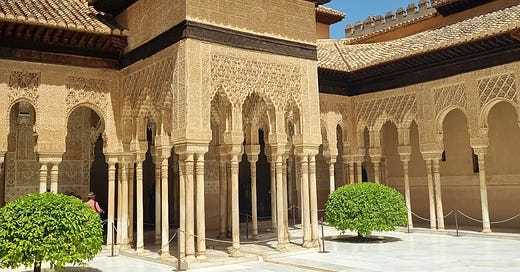



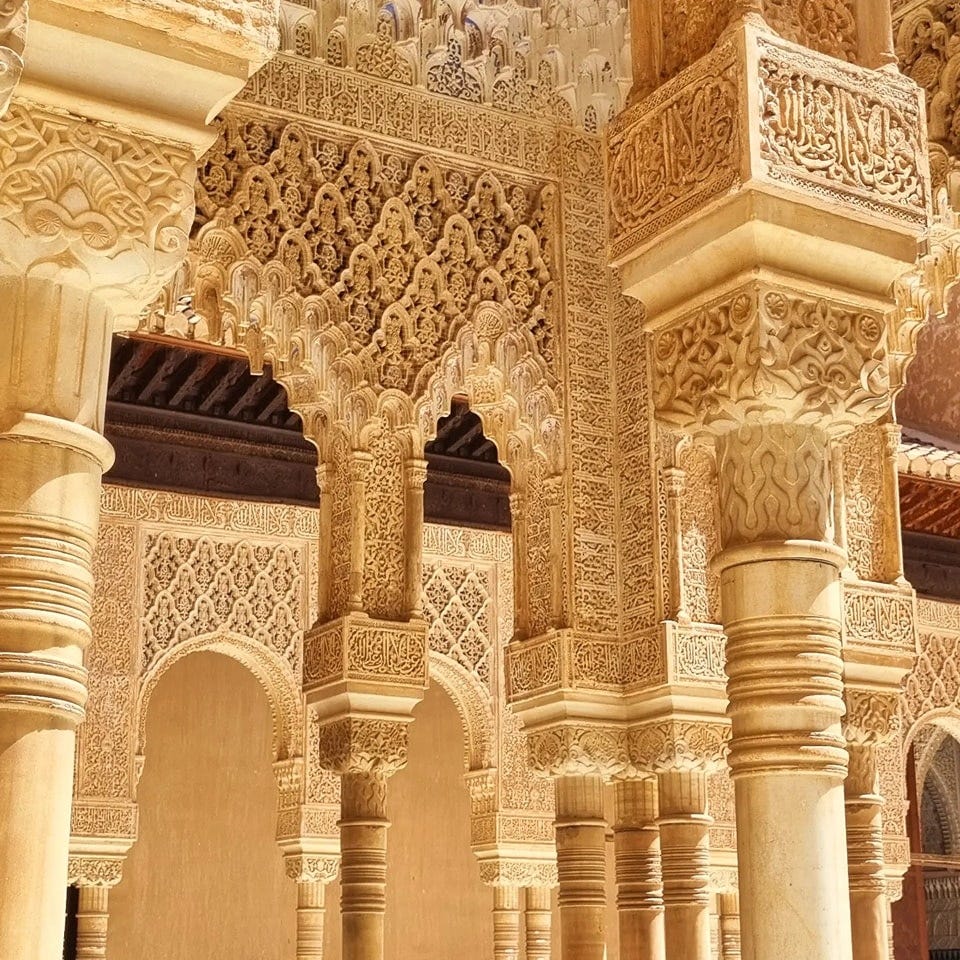
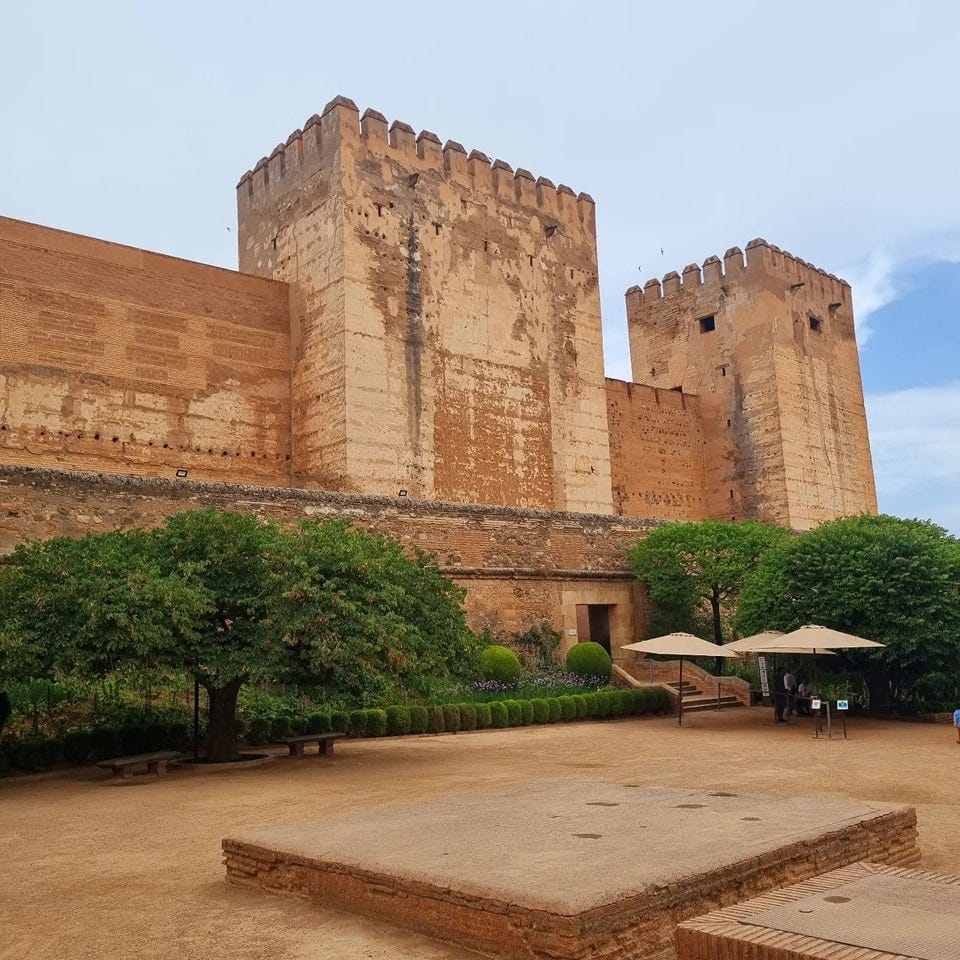

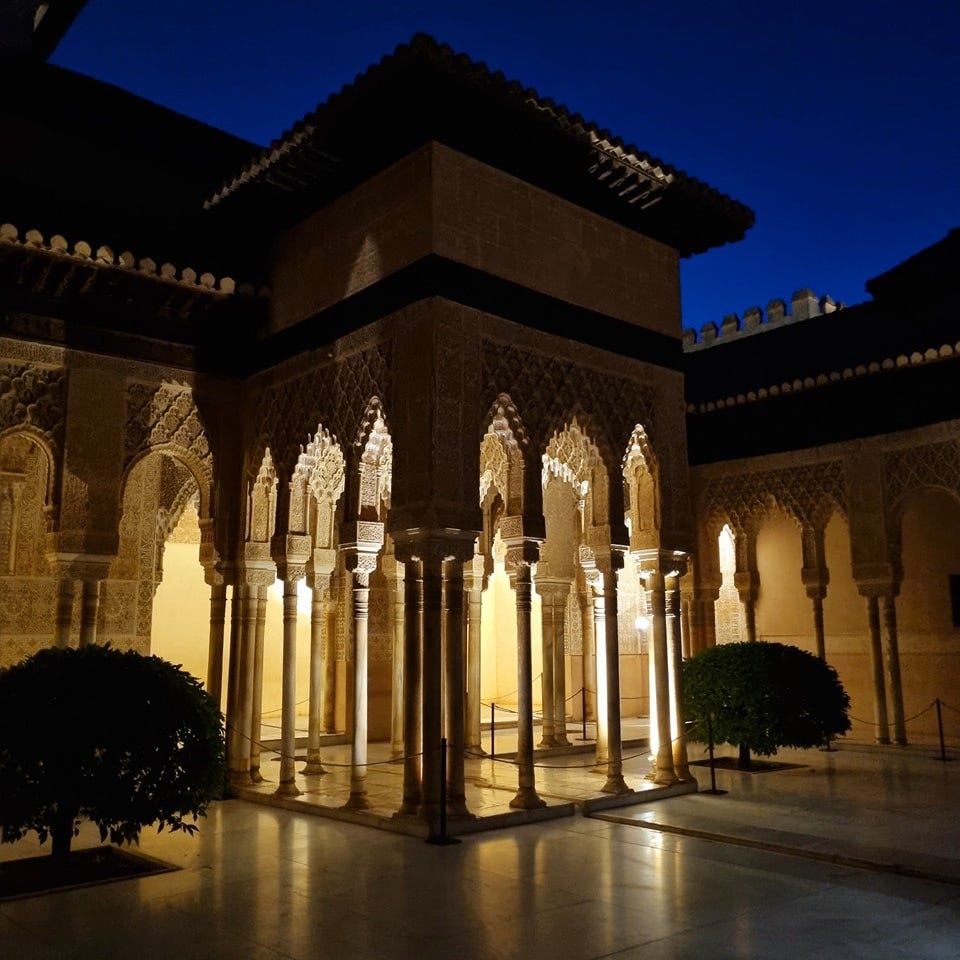

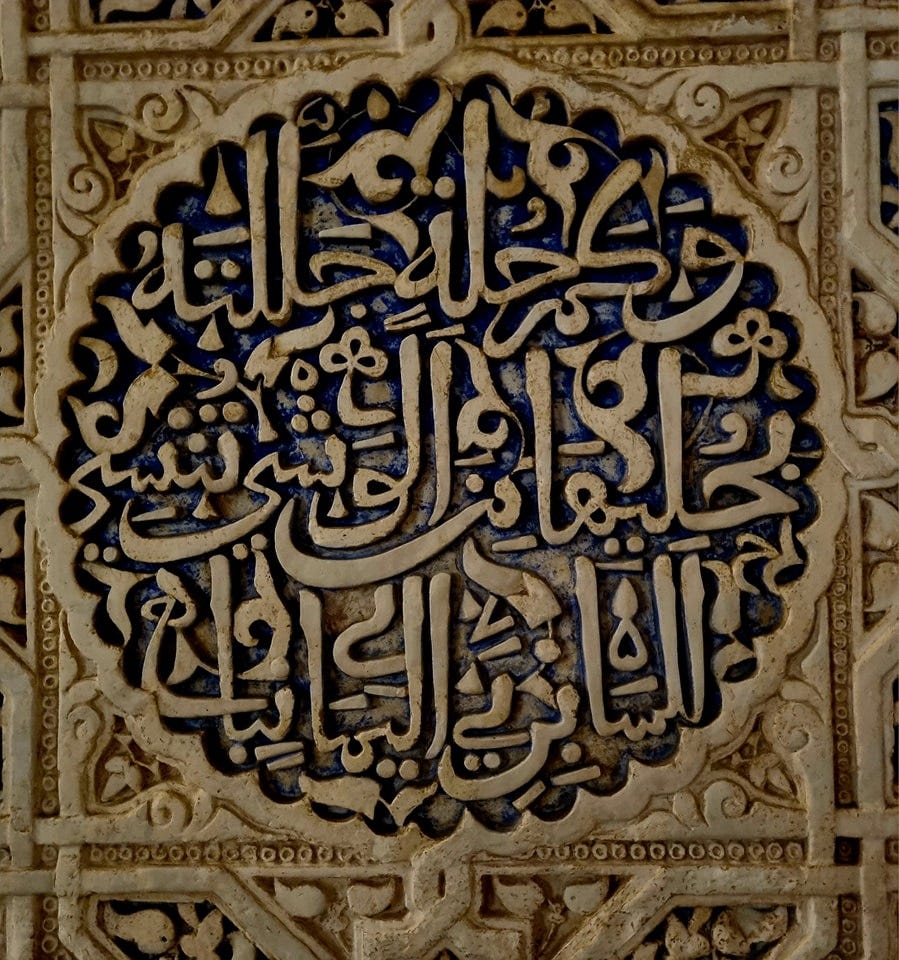



What wonderful pictures! I love Granada, too, and enjoyed reading more about the history than I had previously known.
Intricate is definitely the word I would use when looking at these photos. I've never seen anything like it. I wonder how it felt to move into a place so inconceivably gorgeous knowing you are ending the chance of more being built like that by conquering it.